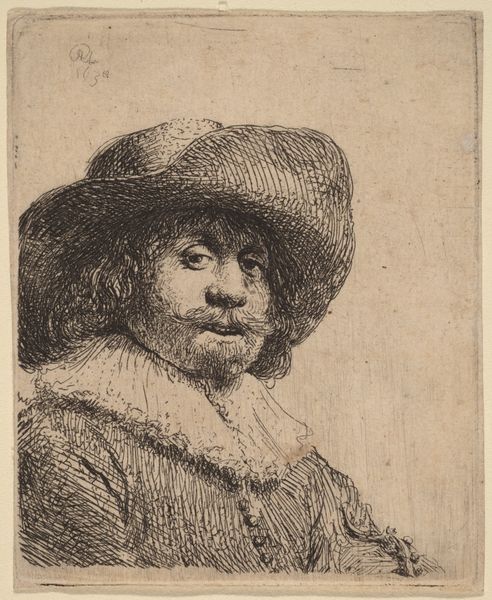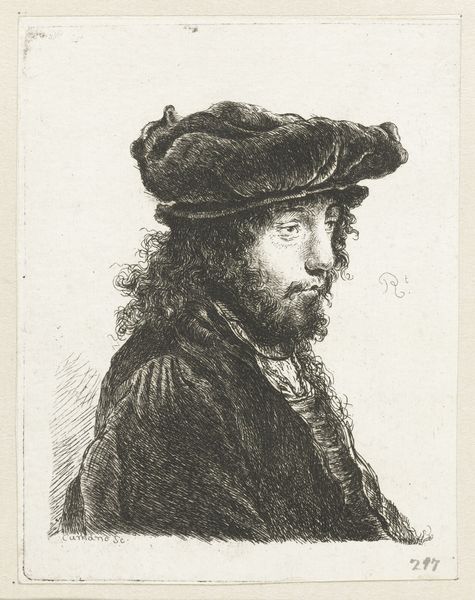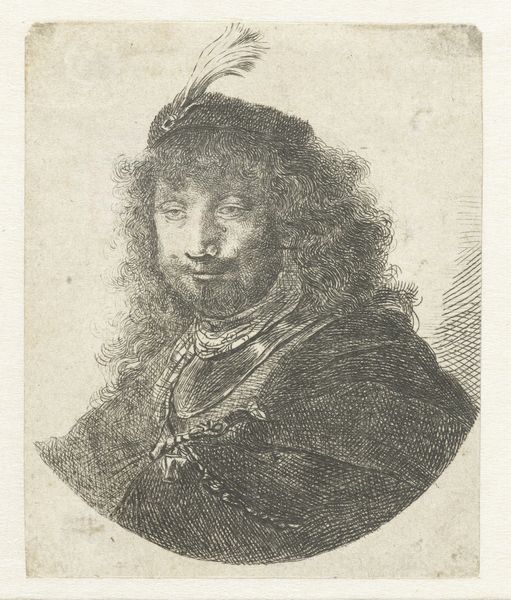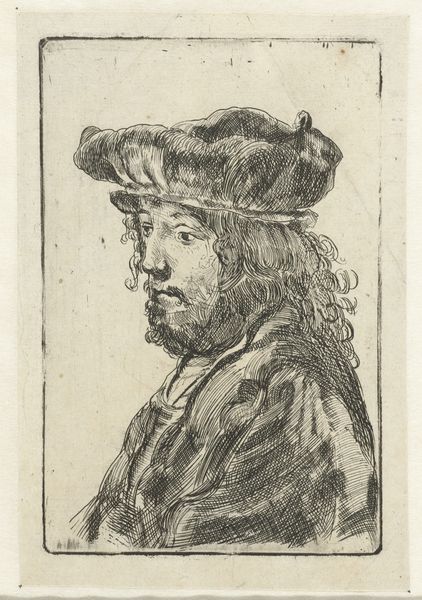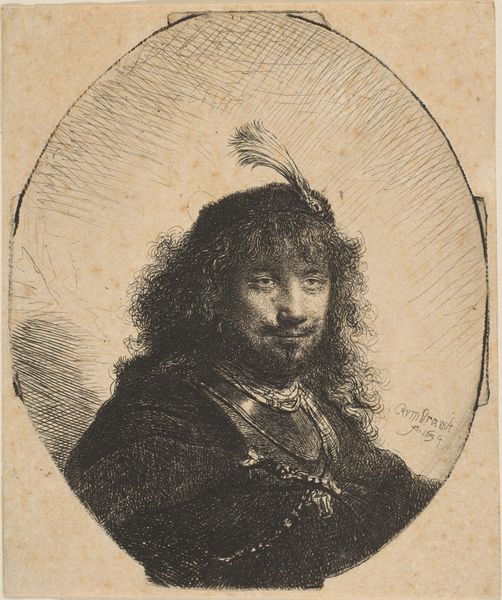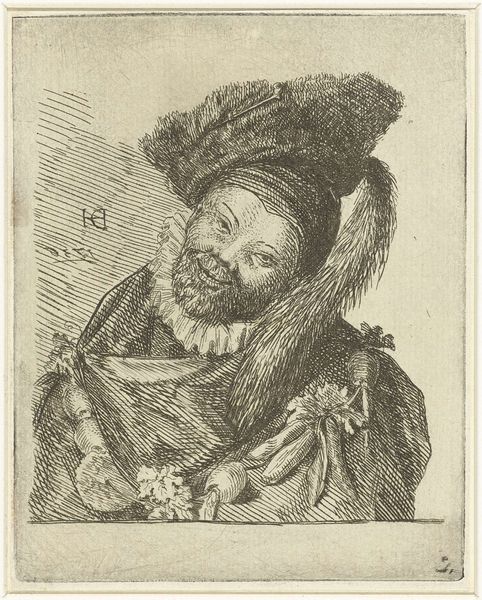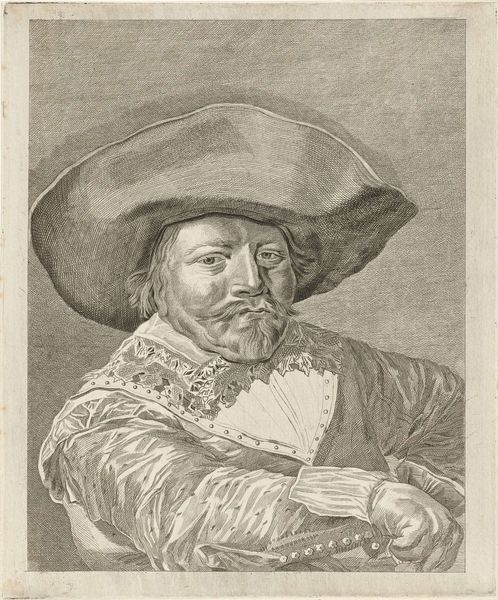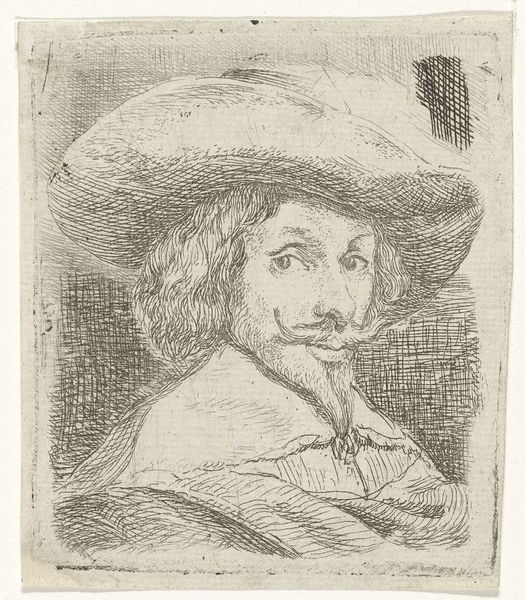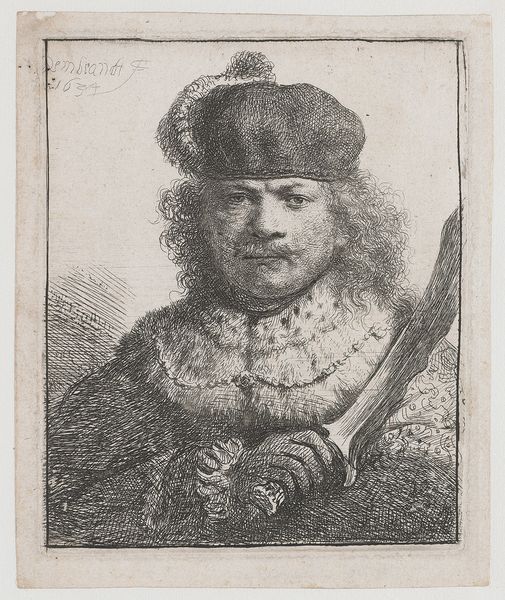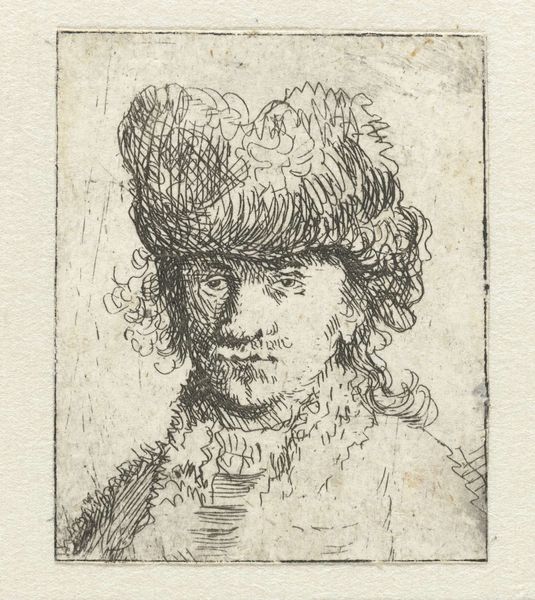
Dimensions: height 76 mm, width 62 mm
Copyright: Rijks Museum: Open Domain
Curator: Here we have "Man in a broad-trimmed hat," an engraving probably produced between 1770 and 1803, and part of the collection here at the Rijksmuseum. What are your first thoughts? Editor: Intricate! I'm struck by the density of the lines, creating shadow and form. The figure appears approachable, perhaps even a bit playful. It feels very intimate, even in its slightly rough and aged execution. Curator: Indeed. Prints like these gained popularity during the 18th century as a means for broader audiences to access art and portraiture. This image allows us to consider notions of accessibility and democratization in the art world of the period, reflecting a shift from exclusively aristocratic patronage. Editor: The etching emphasizes shape through tone, not contour. See how the engraver used a flurry of dashes in varying directions to sculpt the broad-brimmed hat. The subject’s humanity comes alive in these marks. It seems to play on notions of accessibility in the work's composition as well as context, if that's not too great a stretch. Curator: Not at all. The relatively informal and unassuming posture invites interpretation. We can imagine myriad narratives surrounding this individual—who he was, his social standing, his personal relationships. What did it mean to create, own, and display his image during that historical moment? Editor: The semiotic interplay between the hat—suggestive of status, or at least of a particular fashionable leaning—and the face, which is marked with what appear to be wrinkles, maybe signs of worry, create some degree of tension. It makes one wonder what aspects of self are emphasized and masked. Curator: Precisely! Prints allowed for wider circulation of images and, therefore, ideas, potentially challenging entrenched power structures. They encouraged visual literacy amongst wider demographics, offering opportunities for interpreting the subjects represented, engaging critically with them. Editor: This work's impact comes, I think, from a mastery of simple, formal decisions. What appears rough at first seems, after some examination, quite intentional and deeply refined. Curator: I agree. Reflecting on it, one sees that such printed images were indeed pivotal in shaping not just artistic tastes, but cultural and political discourse too. Editor: An economy of means expressing volumes—perhaps what resonates most profoundly after careful observation.
Comments
No comments
Be the first to comment and join the conversation on the ultimate creative platform.
